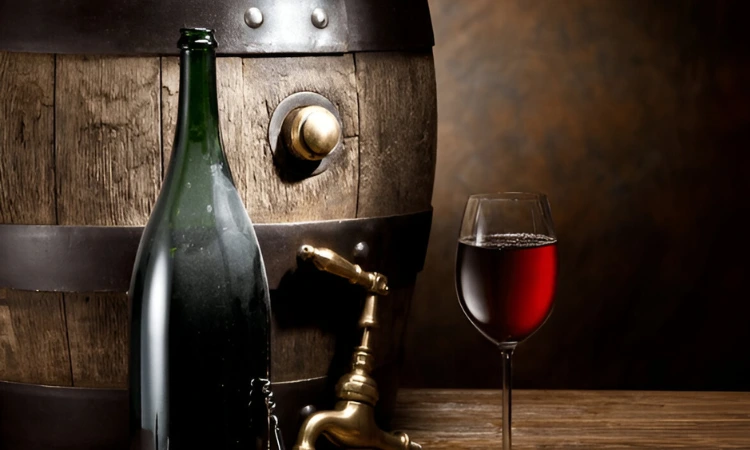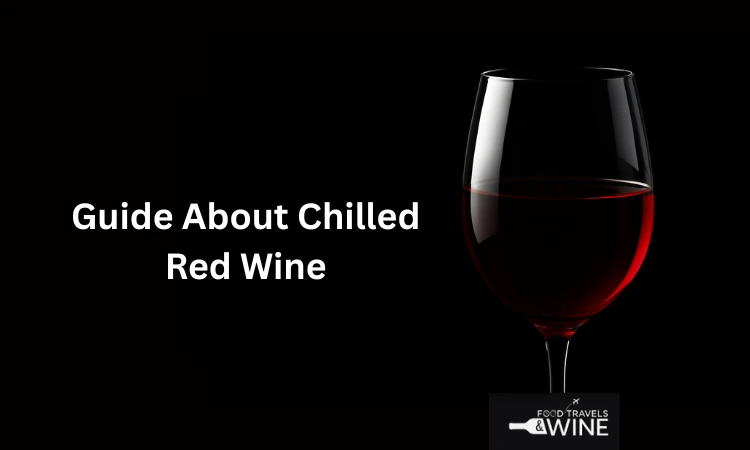Ever wondered why experts say not to chill your red wine? There’s a reason it’s a golden rule.
Red wine’s depth, aroma, and flavor structure are all temperature-sensitive. Serving it too cold doesn’t make it refreshing—it ruins the experience.
Why you should not serve chilled red wine comes down to science: cold temperatures mute the flavors, stiffen the tannins, and kill the complexity.
Understanding the serving temperature of red wine can make or break your wine night. If you’ve ever tasted a dull or bitter red, the culprit could be chilling.
Let’s explore the real effects of wine temperature.
Why Temperature Matters in Red Wine Serving?
Getting the wine serving temperature right isn’t just fancy talk—it’s chemistry. Red wine reacts to temperature shifts. Too cold, and its rich aromas vanish.

Too hot, and the alcohol overpowers the taste. The red wine temperature guide exists for a reason: balance.
The ideal red wine temperature allows tannins to soften, flavors to bloom, and the wine to shine with every sip.
What Happens When Red Wine Is Served Too Cold?
Serving red wine too cold might seem refreshing, but it’s a fast way to ruin the experience.
The effects of chilling red wine cause a loss of complexity, and some major drawbacks of chilled red wine.
Red Wine Aromas Get Muffled in the Cold:
Think of wine aroma temperature like smelling perfume in a freezer—cooling dulls the wine nose and leaves your senses craving more. When chilled, the red wine bouquet is suppressed, hiding delicate fruit, spice, and floral notes that make the wine enjoyable and inviting.
Tannins Taste Rougher When Cold:
Lower temperatures affect tannins and wine temperature, making them taste sharper and more aggressive. This results in a bitter wine taste and harsh wine mouthfeel that overwhelms the palate instead of balancing it smoothly. Chilling can turn soft tannins into rough edges.
Body and Structure Get Lost in Chilling:
Cold tightens a wine’s texture, stripping away its natural wine body and richness. The wine loses its wine balance, feeling thin and dull. The vibrant red wine texture you expect becomes muted, leaving behind an uninspiring, lifeless drink.
The Science Behind Ideal Red Wine Temperatures
Understanding the ideal red wine serving temperature is key to unlocking each wine’s full potential.
The temperature ranges of different red wine types highlight their unique flavors and textures, so serving wine right matters more than you might think.
Full-bodied reds like Cabernet Sauvignon, Syrah, and Nebbiolo perform best between 15 °C and 20°C (59 °F and 68°F).
This slightly cooler-than-room-temperature temperature softens their firm tannins and allows rich aromas and complex flavors to emerge without the alcohol overpowering the palate.
The sweet spot is cooler for medium—to light-bodied reds such as Pinot Noir, Grenache, and Dolcetto, around 12–15°C (53–59°F).

These wines have higher acidity and more delicate profiles, which can feel sharp or thin if served too warm. Cooling them lightly enhances freshness and balance.
Fridge temperatures typically hover around 4°C (39°F), which is too cold for most reds unless you’re chilling them briefly before serving. A wine cellar or cool room (12–15°C) offers a natural storage and serving temperature.
Room temperature, often around 20–22°C (68–72°F), can be too warm for many reds, flattening flavor and emphasizing alcohol.
Knowing how to adjust between fridge, cellar, and room temperatures ensures you always serve wine correctly.
The Misconception: Not All Reds Are Meant to Be Warm
A typical red wine myth is that all reds must be served warm or at room temperature. This simply isn’t true. Some varieties, like Pinot Noir and Beaujolais, actually benefit from gentle chilling.
These chillable reds have lighter bodies and higher acidity, which shine when slightly cooled.
It’s important to understand that chilling red wine doesn’t mean serving it as cold as soda or beer. Instead, it’s about a subtle temperature reduction—enough to soften tannins and brighten flavors without muting the wine’s character.
Overchilling leads to those red wine fridge time mistakes, where the wine becomes too cold and loses complexity.
So, while many reds are warm, don’t overlook the beauty of slightly chilled reds. This middle ground respects the wine’s nuances and offers a fresh, balanced tasting experience that challenges outdated ideas.
When Is Chilled Red Wine Actually Okay?
If done right, knowing when to chill red wine can enhance your drinking experience. The best red wines to chill are typically lighter, fruit-forward varieties like Pinot Noir, Gamay (Beaujolais), Dolcetto, and some Grenache blends—these are classic chillable reds.
Chilling them slightly (around 12–15°C or 53–59°F) helps highlight their fresh acidity and bright fruit notes.
However, even these wines shouldn’t be served too cold, as overchilling masks their delicate flavors and aromas. A gentle chill is enough to refresh without dulling the wine’s complexity or texture.
Tips on How to Serve Red Wine the Right Way:

Use a Thermometer or Follow the “15-Minute Fridge Rule”
For perfect red wine serving tips, use a wine thermometer or chill the bottle in the fridge for about 15 minutes before serving.
This helps you hit the ideal temperature without guesswork, ensuring the wine tastes as it should.
Serve in the Right Glasses at the Right Temperature
Proper wine etiquette means pairing your wine with the right glass and serving it at the correct temperature.
This enhances aroma and flavor, allowing the wine to express its full character and giving you the best tasting experience.
Don’t Chill to Cover Up Low-Quality Wine—Educate the Palate
How to serve red wine properly includes respecting the wine’s quality. Avoid chilling to mask flaws in cheap wine.
Instead, learn to appreciate the nuances, and let your palate grow—good wine deserves to be enjoyed at its best.
Conclusion:
Serving red wine at the right temperature is key to unlocking its full flavor and aroma. Avoid overchilling to prevent harsh tannins and muted complexity. Remember, gentle chilling suits some reds, but quality and proper serving always matter. Enjoy your wine thoughtfully for the best experience.
Related: Discover the Best Red Wine for French Onion Soup Secrets
Is it okay to drink red wine from the fridge?
Yes, some lighter red wines can be enjoyed straight from the fridge, but full-bodied reds usually benefit from warming slightly to release more flavor.
Is red wine ok if it gets cold?
If red wine gets too cold, its aromas and flavors can become muted, making it taste flat and less enjoyable.
Is it OK to let chilled wine get warm?
Allowing chilled red wine to warm up gently can help reveal its true character and balance, enhancing the overall tasting experience.
Does chilling red wine ruin it?
Chilled red wine isn’t always harmful, but serving it too cold can suppress complexity and make tannins taste harsher, diminishing the wine’s quality.

